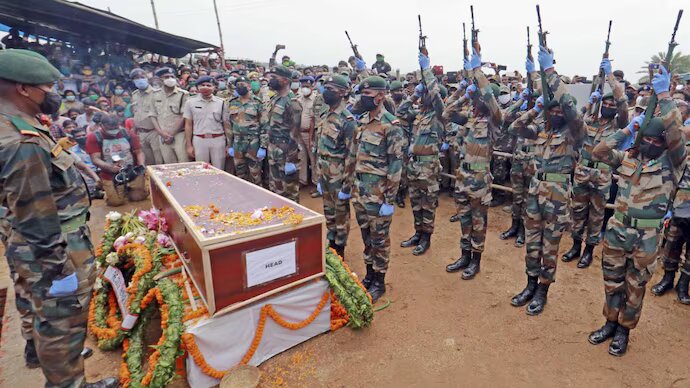India-Pakistan Tensions Escalate After Pahalgam Attack: A Perilous Hour for South Asia
India-Pakistan Tensions Escalate After Pahalgam Attack: A Perilous Hour for South Asia
The already fragile relationship between India and Pakistan is once again on the edge following a deadly terrorist attack in Pahalgam, Kashmir. As tensions rise, both nations are exchanging sharp accusations, and the international community watches with concern. With the region’s history of conflict and the ever-present shadow of nuclear weapons, this is a perilous hour for South Asia.
⚠️ What Happened in Pahalgam?
Earlier this week, a tragic terrorist attack occurred in Pahalgam, located in the Indian-administered region of Kashmir. Several Indian soldiers lost their lives. In response, Indian officials quickly blamed Pakistan-based militant groups, reigniting a familiar — but dangerous — cycle of blame and threats.
The Indian government, facing mounting public pressure, has hinted at a potential military response. This comes at a politically sensitive time, as India heads into general elections and national security becomes a key voter issue.
🇮🇳 India’s Tough Talk: Real Threat or Political Posturing?
The Modi-led government has made it clear that silence will not be their response. Past incidents, such as the 2016 Uri attack and the 2019 Pulwama-Balakot escalation, show that India is willing to take bold military steps under similar circumstances.
What makes this moment especially tense:
- Public outcry demanding swift action.
- Elections approaching, increasing pressure on political leaders.
- Past precedents of airstrikes and cross-border operations.
- National media pushing for aggressive retaliation.
At the same time, strategic minds in New Delhi are aware of the risks. India doesn’t want to trigger a full-blown war, but it also cannot afford to appear weak.
🇵🇰 Pakistan’s Response: Firm Denial, Military Preparedness
Pakistan has strongly denied any involvement in the attack, calling India’s allegations “baseless” and “politically motivated.” Officials in Islamabad suggest that India is using this incident to stoke nationalism ahead of elections.
Notably, Pakistan’s military has also issued statements, warning that any aggression will be met with force. This is significant. In Pakistan, the military plays a central role in matters of foreign policy and national security.
Pakistan’s position:
- Denial of state links to the attack.
- Calls for de-escalation and diplomatic resolution.
- Readiness to respond if provoked.
🧨 Why This Moment Feels Different
Tensions between India and Pakistan are nothing new. But this time, several factors make the situation more dangerous:
1. No Backdoor Diplomacy
Unlike previous crises, there are no clear signs of backchannel talks between the two nations. In past standoffs, secret communication often helped ease tensions. That option seems missing now.
2. Election Pressure
Both governments are facing domestic political challenges. India is preparing for elections. Pakistan’s political landscape is also volatile, with civil-military tensions and economic instability.
3. Media Hype and Public Sentiment
The media in both countries is fueling public outrage, leaving little room for nuance or diplomacy. In such a charged environment, leaders may feel pushed into action they might otherwise avoid.
4. Nuclear Overhang
Let’s not forget — both countries are nuclear-armed. Any miscalculation or unintended escalation could have catastrophic consequences.
🌍 Global Reaction: Calls for Restraint, Little Action
The international community has reacted with concern. Both Washington and Beijing have issued formal statements urging restraint, while the United Nations has called for dialogue. However, there has been no real push for mediation.
Why the global response feels muted:
- The US is preoccupied with its own domestic and global priorities.
- China maintains strong relationships with both India and Pakistan, making it cautious.
- The UN has historically had limited influence in resolving Indo-Pak crises.
In short, while the world is watching, it is not intervening — at least not yet.
✅ What Can Be Done to De-escalate?
History shows us that while military action may offer short-term political gains, it almost always leads to long-term instability. There are peaceful options available — if both sides are willing to use them.
Pathways to Peace:
- Resume diplomatic channels, even unofficial ones.
- Confidence-building measures like reopening trade or cultural ties.
- Track II diplomacy involving academics, retired officials, and civil society.
- Public responsibility — media and influencers should avoid inflammatory rhetoric.
🧭 Final Thoughts: Will Cooler Heads Prevail?
This is, without exaggeration, one of the most dangerous moments in recent India-Pakistan relations. The stakes are high, the emotions are raw, and the political climate is tense.
But war is not the only path. Dialogue, diplomacy, and restraint are still possible — and far more beneficial to the millions who would suffer the most in a conflict.
In this perilous hour, the region doesn’t need more missiles or military moves. It needs leadership, maturity, and the courage to choose peace over provocation.
Liked this article?
Share it with others and follow us for updates on South Asian geopolitics, crisis analysis, and global diplomacy.
